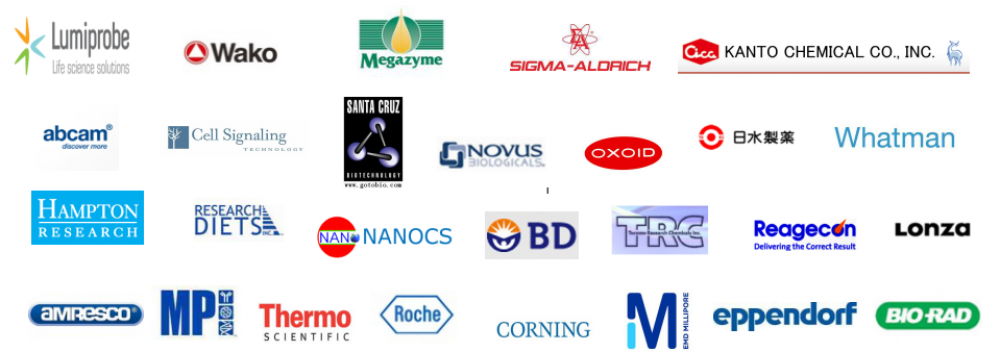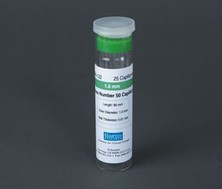低温泡沫杜瓦瓶 Spearlab Cryogenic Foam Dewars
Spearlab Dewars
HR4-662 Cryogenic Foam Dewar (500 ml) – Small 500ml规格
HR4-675 – Spearlab Cryogenic Foam Dewar (2 liter) 2L规格
低温泡沫杜瓦瓶 Spearlab Cryogenic Foam Dewars
 Cryocrystallography 蛋白结晶学
Cryocrystallography 蛋白结晶学
 Each dewar is supplied with a lid 每个杜瓦瓶都配有盖子
Each dewar is supplied with a lid 每个杜瓦瓶都配有盖子
 Proprietary foam construction (USPTO # 7,971,744)
Proprietary foam construction (USPTO # 7,971,744)
 Mini (130 ml), Small (500 ml), Standard (800 ml), Large (1400 ml) and Tall (1800 ml)
Mini (130 ml), Small (500 ml), Standard (800 ml), Large (1400 ml) and Tall (1800 ml)
 Reduced ice formation on dewar lip
Reduced ice formation on dewar lip
 Easier to dry
Easier to dry
 Foam construction reduces slipping
Foam construction reduces slipping
Spearlab FD-130 Cryogenic Foam Dewar (130 ml) – Mini : Small, hexagonal outside, hand held foam dewar, maximum volume 175 ml. Each dewar is supplied with a matching foam lid to insulate the contents from ambient air. Dimensions of the cylindrical cavity in this vessel are 2 inches in diameter by 3.5 inches deep, so that it easily holds 130 ml and a maximum volume of 175 ml of liquid nitrogen. The HR4-676 has an overall height of approximately 4.5 inches without cover and the width is 3.5 inches at the top and 3.75 inches on the bottom (measured on the flats of the hexagon). Circular cover is approximately 0.5 inches tall x 3.5 inches diameter.
Spearlab Cryogenic Foam Dewar (500 ml) – Small: The small foam dewar shape is circular, with a protruding handle, so that it resembles a large teardrop. Each dewar is supplied with a matching foam lid to insulate the contents from ambient air. Dimensions of the cylindrical cavity in this vessel are 4.5 inches in diameter by 2.8 inches deep, so that it easily holds 500 ml of liquid nitrogen.
Spearlab FD-800 Cryogenic Foam Dewar (800 ml) – Standard: The standard foam dewar shape is circular, with a protruding handle, so that it resembles a large teardrop. Each dewar is supplied with a matching foam lid to insulate the contents from ambient air. Dimensions of the cylindrical cavity in this vessel are 5.8 inches in diameter by 2.8 inches deep, so that it easily holds 800 ml of liquid nitrogen.
Spearlab FD-1400 Cryogenic Foam Dewar (1400 ml) – Large: The large foam dewar shape is circular, with a protruding handle, so that it resembles a large teardrop. Each dewar is supplied with a matching foam lid to insulate the contents from ambient air. Dimensions of the cylindrical cavity in this vessel are 6.3 inches in diameter by 3.8 inches deep, so that it easily holds 1400 ml of liquid nitrogen. Overall height is approximately 6 inches without cover and the width is 9 inches on the short axis and 11 inches on the long axis. Cover approximately 0.5 inches tall x 9 inches diameter.
Spearlab FD-1800 Cryogenic Foam Dewar (1800 ml) – Tall: The tall foam dewar shape is a tapered octagon on the outside with a cylindrical interior. The tapered octagon features a wide, stable base. Each dewar is supplied with a matching foam lid to insulate the contents from ambient air. Dimensions of the cylindrical cavity in this vessel are 3.5 inches in diameter by 12.5 inches deep, so that it holds approximately 1,800 ml of liquid nitrogen. The outside dimensions of the tall dewar are 15.25 inches tall with a 6.25 inches wide top and a 7.75 inches wide base (measured on the flats of the octagon). The cover is 6.5 inches in diameter and 0.5 inches thick.
The patented (USPTO # 7,971,744) design of the Spearlab Cryogenic Foam Dewar makes it easy to handle and safer to use than a traditional low profile glass dewar. Also, because of its lower thermal mass, a foam vessel will cause less boil off when it is filled with liquid nitrogen. Additionally, the dewar will accumulate less frost during regular use. The end result is that less liquid nitrogen is consumed.
The dewars are made from cross-linked polyethylene foam. A density of 4 pounds per cubic foot is used for the 130 ml and 800 ml dewars. A density of 2 pounds per foot is used for the 1400 ml and 2 liter dewars. The higher density foam has significantly higher mechanical strength and stiffness. The lower density foam has slightly lower thermal conductivity. Like most lightweight insulation materials, the thermal conductivity of the foam is predominantly determined by the thermal conductivity of air, which eventually permeates the pores of the foam material.
| CAT NO |
NAME |
DESCRIPTION |
| HR4-676 |
Cryogenic Foam Dewar (130 ml) – Mini |
each |
| HR4-662 |
Cryogenic Foam Dewar (500 ml) – Small |
each |
| HR4-673 |
Cryogenic Foam Dewar (800 ml) – Standard |
each |
| HR4-674 |
Cryogenic Foam Dewar (1400 ml) – Large |
each |
| HR4-675 |
Cryogenic Foam Dewar (2 liter) – Tall |
each |


 X-ray data collection
X-ray data collection









